 March 19, 2020 John E. Ross, KD8IDJ, Editor
| ||||||
Dayton Hamvention Cancels 2020 Show For the first time in its 68-year history, Dayton Hamvention® will not take place this year, due to concerns about the coronavirus outbreak. "The Hamvention Executive Committee has been monitoring the COVID-19 pandemic. We have worked very closely with our local and state health departments. It is with a very heavy heart the Hamvention Executive Committee has decided to cancel Hamvention for this year," Hamvention General Chair Jack Gerbs, WB8SCT, said in announcing the cancellation on March 15. "This decision is extremely difficult for us, but with around 2 months until the Great Gathering we felt this action necessary. More specific details regarding the closure will soon be posted. Thank you for your understanding in this time of international crisis." The Dayton Hamvention cancellation comes less than a week after the International DX Convention in Visalia, California, called off this year's show. The Dayton Amateur Radio Association (DARA) sponsors Hamvention. Since 2017, Hamvention has been held each May at the Greene County Fairgrounds and Expo Center in Xenia, Ohio. The international gathering attracted more than 32,000 visitors in 2019. Hamvention's announcement has caused the cancellation of other associated events. These include Contest University, the Contest Dinner, and the Top Band Dinner. The QRP Amateur Radio Club International's "Four Days in May" event has also been cancelled. Presumably, the DX Dinner, sponsored by the SouthWest Ohio DX Association (SWODXA) and AMSAT Academy have also been called off, although no formal announcements have been made. ARRL Suspending Tours and Guest Visits to Headquarters, W1AW As part of efforts under way to help protect the health and safety of ARRL Headquarters employees and volunteers from the impacts of the Out of an abundance of caution, this suspension will be in effect until further notice. We apologize for any inconvenience this may cause to our members and their guests who had been planning to visit us in Newington, Connecticut. We feel, however, that this is a necessary precaution and is in keeping with the guidance being provided by federal and local health professionals. We appreciate everyone's patience and understanding as we all endeavor to deal with this difficult public health situation. FCC Levies $18,000 Fine on Louisiana Amateur Radio Licensee In an enforcement case prompted by complaints filed in 2017, the FCC has imposed an $18,000 forfeiture on Jerry W. Materne, KC5CSG, of Lake Charles, Louisiana, for intentional interference and failure to identify. The FCC had proposed the fine in a Notice of Apparent Liability (NAL) in the case in July 2018, and, based on Materne's response to the NAL, the agency affirmed the fine in a March 12 Forfeiture Order (FO). As the FCC recounted in the FO, an FCC agent "observed Materne Materne disputed the FCC's findings, arguing that the NAL should be canceled because the agent "was mistaken in his determination that the source of the interference was Materne's station" as his radio was not capable of operating on the repeater frequency in question, the FCC said in the NO. Materne also asserted that he is unable to pay the fine and suggested in his response that the FCC should be able to access his financial information. The FCC countered that the radio the agent observed in Materne's possession was capable of operating on the frequency in question. "We therefore are unpersuaded...that the proposed forfeiture should be canceled because, he alleges, he was not the party causing interference to the repeater and the radio in his possession could not operate on the frequency in question," the FCC said in affirming the findings of the NAL. "We are also unpersuaded by Materne's argument that he lacks the ability to pay the full $18,000 forfeiture." The FCC said Materne failed to provide the FCC with proof of inability to pay, as required by the NAL. The FCC gave Materne 30 days to pay the fine, or face having the case turned over to the US Department of Justice for enforcement. ARRL Podcasts Schedule
Both podcasts are available on iTunes (iOS) and Stitcher (Android) as well as on Blubrry -- On the Air | Eclectic Tech. ARRL Calls for Continued Coexistence in 3.4 and 5.9 GHz Bands In comments filed on March 9, ARRL said that while the FCC has not proposed to alter the secondary amateur allocation at 5.850 - 5.925 GHz, changes the FCC has proposed for other users "will constrain current and future amateur operations" in that band, if the proposals are adopted. The Amateur Radio Service shares the 5.850 - 5.925 GHz band on a secondary basis with Dedicated Short-Range Communications (DSRC) systems. Amateur radio also shares the 5.850 - 5.875 GHz segment with industrial, scientific, and medical (ISM) applications. ARRL's comments were in response to a Notice of Proposed Rule Making (NPRM) in WT Docket 19-138, in which the "This proceeding is of concern to radio amateurs across the country, because many of the operations carried out in this band are similar to those conducted in the 3.4 GHz band, from which the Commission, in a companion proceeding, is proposing to evict radio amateur operations," ARRL said. ARRL urged the FCC "to consider holistically" its various spectrum reallocation proposals for mid-range spectrum, including the 5.9 GHz and 3.4 GHz proceedings as well as proposals in another proceeding that would affect 5.925 - 7.125 GHz. Those proposals would dedicate up to 1.2 GHz of spectrum for various types of unlicensed devices. "The spectrum must be managed carefully and additional shared spectrum considered in order not to severely curtail amateur networks that often are used in public service applications when similar capabilities are not available to public service providers," ARRL said in its remarks. ARRL noted the widespread use of 5.9 GHz in particular for amateur mesh and amateur television networks and links that radio amateurs have engineered into the band on a non-interference secondary basis, often for public service purposes. "For decades, these radio amateur uses have coexisted successfully with the primary users of the 5.9 GHz band without harmful interference," ARRL pointed out. "Because of the flexibility, knowledge, and dedication of many individual radio amateurs, we can continue to operate and even grow, so long as both the 3.4 and 5.9 GHz bands remain available for amateur radio purposes on a secondary basis," ARRL said. "Additional sharing opportunities also should be made available where doing so would not interfere with primary operations and would employ otherwise unused spectrum for public benefit purposes," ARRL added, referencing a pending 3.1 - 3.3 GHz spectrum review by the National Telecommunications and Information Administration (NTIA), which manages spectrum used by the federal government. The K7RA Solar Update Tad Cook, K7RA, Seattle, reports: On Wednesday, Spaceweather.com reported a new emerging Solar Cycle 25 sunspot in the sun's northern hemisphere, but it was not yet numbered. Last week, we reported sunspots on just 2 days, March 8 and 9. Average daily sunspot numbers over the March 12 - 18 reporting week declined from 3.6 to zero, and daily solar flux values dipped from 70.2 to 70.1. Geomagnetic averages were quiet but higher, with planetary A index changing from 4.4 to 5.9 and middle latitude A index from 3.6 to 4.1.
Predicted planetary A index is 8 on March 19; 5 on March 20 - 26; 12 and 8 on March 27 - 28; 5 on March 29 - April 5; 10 and 8 on April 6 - 7; 5 on April 8 - 13; 8, 12, and 8 on April 14 - 16; 5 on April 17 - 22; 12 and 8 on April 23 - 24, and 5 on April 25 - May 2. We have been looking forward to the vernal equinox, which occurs at 0350 UTC on March 20 -- and now perhaps with a new emerging sunspot. This is a favorable time for HF propagation, with both the northern and southern hemispheres receiving an equal amount of solar radiation. Space.com has some of the finer details on the beginning of spring 2020. Sunspot numbers for March 12 - 18 were 0, 0, 0, 0, 0, 0, and 0, with a mean of 0. The 10.7-centimeter flux was 69.9, 68.8, 68.1, 70.2, 69.8, 71.6, and 72, with a mean of 70.1. Estimated planetary A indices were 7, 7, 3, 5, 7, 6, and 6, with a mean of 5.9. Middle latitude A index was 7, 6, 2, 3, 3, 4, and 4, with a mean of 4.1. A comprehensive K7RA Solar Update is posted Fridays on the ARRL website. For more information concerning radio propagation, visit the ARRL Technical Information Service, read "What the Numbers Mean...," and check out K9LA's Propagation Page. A propagation bulletin archive is available. Monthly charts offer propagation projections between the US and a dozen DX locations. Share your reports and observations. Just Ahead in Radiosport
See the ARRL Contest Calendar for more information. For in-depth reporting on amateur radio contesting, subscribe to The ARRL Contest Update via your ARRL member profile email preferences. Coronavirus May Impact Amateur Radio License Testing ARRL Volunteer Examiner Coordinator (VEC) Manager Maria Somma, AB1FM, anticipates that the number of new and upgraded radio amateurs will take a dip in March as VE teams cancel exam sessions due to coronavirus social distancing guidelines. She cited FCC Universal Licensing System (ULS) figures showing that new ham licenses granted for the first half of March totaled 1,298, while another 296 licensees upgraded. Those numbers are down from the 1,697 new "Some sessions are still going on, because they don't have bans in place yet. Also, some teams that only test one or two candidates every month may be able to continue, since that is well below the number of people that most authorities are advising should gather," Somma said. She anticipates a surge will come after bans on larger gatherings are lifted, because examinees are eager to take the exams they have been studying hard for. Somma cautioned that, while March 2020 license numbers appear to be trending downward, it's not possible to reliably predict how an entire month will play out by extrapolating partial-month numbers. "March is the beginning of the busy part of the year, but depending on how the weekends fall and when licensing classes end, a month may peak at different points or be busy the whole way through," she said. More than 764,000 US amateur radio licensees are in the FCC database. ARRL VEC's March VE E-Newsletter assured Volunteer Examiners that their health and safety are top priority and that the ARRL VEC is taking the coronavirus outbreak very seriously. "We understand that with the rapidly changing updates on restrictions and canceled or postponed public events, our VE teams are in different locations and should do what is best for them and their communities," Somma said. "We urge you to stay informed, so you can make informed decisions based on your local community's guidelines, as each community is unique. Then use your best judgement when deciding whether or not to conduct, postpone, or cancel an exam session." Somma directed ARRL VEC VEs and teams to the Centers for Disease Control (CDC) website or to local health departments for the latest information. Errata to 2020 - 2024 Amateur Extra-Class Question Pool Released
In the syllabus at the top of the pool:
In sub-element 3:
The Amateur Extra-class question pool will be updated to reflect these changes. Submit feedback or questions to the Question Pool Committee. Georgia Institute of Technology CubeSat to Feature Amateur Radio Robot Operation The Glenn Lightsey Research Group's Space Systems Design Lab at the Georgia Institute of Technology is sponsoring a 1U CubeSat mission that will include a digital robot. The primary function of the Georgia Tech will use this mission as an opportunity for undergraduates to get involved in all facets of a space mission, from design to implementation and support. GT-1 will test a prototype deployable antenna and solar panels, which can be used for future missions derived from the same baseline design, and with inclusion of additional experimental equipment. It will operate with AX.25 protocol telemetry. In partnership with the W4AQL Georgia Tech Amateur Radio Club, the satellite will also host a digital contact robot payload, inspired by the earlier Russian RS-12 and RS-13 satellites of the early 1990s. GT-1 will collect contact information from stations that contact the robot as it orbits. The satellite will also function as a standard digipeater. Plans call for a deployment from the International Space Station in October. -- Thanks to AMSAT News Service In Brief...
Upcoming ARRL Section, State, and Division Conventions Note: Many conventions and hamfests have been canceled or postponed due to the coronavirus pandemic. Check the calendar of canceled events on the ARRL website.
Find conventions and hamfests in your area.
. .
Subscribe to...
Free of charge to ARRL members...
| ||||||
.jpg) The glum news was not entirely unexpected, given widespread cancellations of public gatherings and a national state of emergency.
The glum news was not entirely unexpected, given widespread cancellations of public gatherings and a national state of emergency.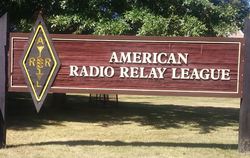 coronavirus, ARRL suspended all tours and guest visits to Hiram Percy Maxim Memorial Station W1AW and ARRL Headquarters, effective Monday, March 16.
coronavirus, ARRL suspended all tours and guest visits to Hiram Percy Maxim Memorial Station W1AW and ARRL Headquarters, effective Monday, March 16.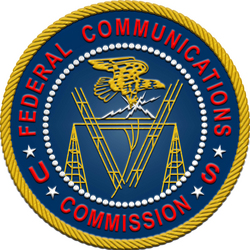 causing intentional interference to a local repeater by generating digital noise into an analog radio." The agent further reported that Materne failed to transmit his call sign, as required.
causing intentional interference to a local repeater by generating digital noise into an analog radio." The agent further reported that Materne failed to transmit his call sign, as required.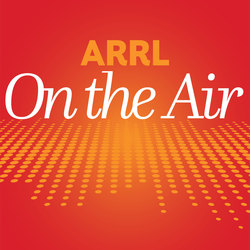 The latest (March 12) episode of the On the Air podcast focuses on how to calculate feed line loss, real-world examples of how digital and analog FM transceivers handle weak signals, and an interview with Rob Macedo, KD1CY, Eastern Massachusetts ARES Section Emergency Coordinator and SKYWARN Coordinator for the National Weather Service Boston/Norton office. In the interview, Rob offers information about how hams can get involved with SKYWARN.
The latest (March 12) episode of the On the Air podcast focuses on how to calculate feed line loss, real-world examples of how digital and analog FM transceivers handle weak signals, and an interview with Rob Macedo, KD1CY, Eastern Massachusetts ARES Section Emergency Coordinator and SKYWARN Coordinator for the National Weather Service Boston/Norton office. In the interview, Rob offers information about how hams can get involved with SKYWARN. The latest episode of the Eclectic Tech podcast (Episode 3) includes an interview with JS8Call creator Jordan Sherer, KN4CRD, revisiting SSTV, and a discussion of arc-fault circuit breakers with Bob Allison, WB1GCM.
The latest episode of the Eclectic Tech podcast (Episode 3) includes an interview with JS8Call creator Jordan Sherer, KN4CRD, revisiting SSTV, and a discussion of arc-fault circuit breakers with Bob Allison, WB1GCM. FCC said it would "take a fresh and comprehensive look" at the rules for the 5.9 GHz band and proposed to make the lower 45 MHz of the band available for unlicensed operations and to permit vehicle safety systems in the upper 30 MHz of the band.
FCC said it would "take a fresh and comprehensive look" at the rules for the 5.9 GHz band and proposed to make the lower 45 MHz of the band available for unlicensed operations and to permit vehicle safety systems in the upper 30 MHz of the band.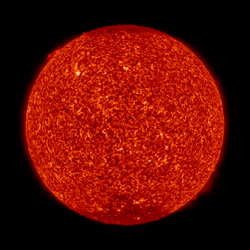 Predicted solar flux for the next 45 days is 72 on March 19 - 21; 70 on March 22 - April 4; 72 on April 5 - 18; 70 on April 19 - May 1, and 72 on May 2.
Predicted solar flux for the next 45 days is 72 on March 19 - 21; 70 on March 22 - April 4; 72 on April 5 - 18; 70 on April 19 - May 1, and 72 on May 2.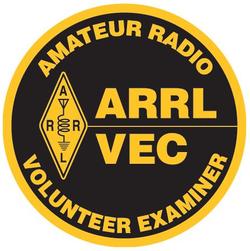 ham licenses granted during the same period last year, which also saw 467 upgrades.
ham licenses granted during the same period last year, which also saw 467 upgrades. The NCVEC Question Pool Committee has issued
The NCVEC Question Pool Committee has issued .jpg) GT-1 satellite is to serve as an educational proof of concept and satellite bus demonstrator.
GT-1 satellite is to serve as an educational proof of concept and satellite bus demonstrator.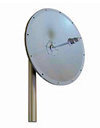 One of two US VHF-UHF-microwave groups has canceled its 2020 conference, while another has postponed its event. The Southeastern VHF Society (
One of two US VHF-UHF-microwave groups has canceled its 2020 conference, while another has postponed its event. The Southeastern VHF Society (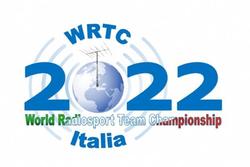 The World Radiosport Team Championship 2022 (
The World Radiosport Team Championship 2022 (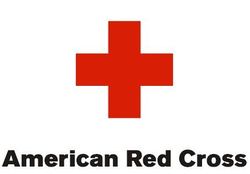 Red Cross-affiliated radio amateurs from many states and Puerto Rico are planning a nationwide Red Cross emergency communications drill for May 30. The drill will consist of two parts. Part A will be a local optional drill held on VHF for participants to practice passing voice traffic with relay stations set up in local EOCs or via mobile stations parked strategically between Red Cross HQ and suburban shelters. Part B will be national in scope, with hams passing Red Cross forms using the ARC Message Utility technique on Winlink RF. Messages will be marked "DRILL" and will be sent to the Red Cross Safe & Well HQ in New York City as a clearinghouse. For further information, or to express interest in participating, contact
Red Cross-affiliated radio amateurs from many states and Puerto Rico are planning a nationwide Red Cross emergency communications drill for May 30. The drill will consist of two parts. Part A will be a local optional drill held on VHF for participants to practice passing voice traffic with relay stations set up in local EOCs or via mobile stations parked strategically between Red Cross HQ and suburban shelters. Part B will be national in scope, with hams passing Red Cross forms using the ARC Message Utility technique on Winlink RF. Messages will be marked "DRILL" and will be sent to the Red Cross Safe & Well HQ in New York City as a clearinghouse. For further information, or to express interest in participating, contact 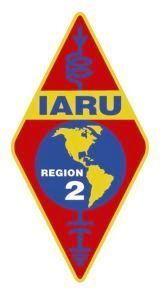 IARU Region 2 Emergency Communication and Satellite workshops will be held online. With travel restrictions and self-isolation requirements in many countries due to COVID-19, the May 30 and 31 International Amateur Radio Union Region 2 (IARU R2)
IARU Region 2 Emergency Communication and Satellite workshops will be held online. With travel restrictions and self-isolation requirements in many countries due to COVID-19, the May 30 and 31 International Amateur Radio Union Region 2 (IARU R2) 







